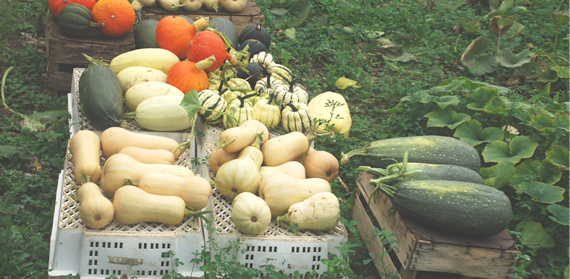Guest post by Luke Owen, Centre for Agroecology, Water and Resilience and Elizabeth Bos, Centre for Business in Society
Our relationships with – and in – online spaces and the technology that enables us to connect and ‘log on’ to the internet is having an impact on how we interact with the people and environments around us. For example, social networking through sites such as Facebook was the fifth single most popular online activity in 2013 amongst UK adults[1]
Rewind only a few years and the Internet was a far less dynamic, participatory and accessible entity with less importance for socio-economic activity. Gone is the need for a desktop computer, a modem and telephone land line; these have all been superseded by much faster and more powerful wireless and portable devices such as laptops, smartphones and tablets. This shift to a more dynamic online environment has been captured by the term ‘Web 2.0’, reflecting a recent move away from static information pages towards of end users as co-creators[2].
Our recent research explored these comparatively recent and rapid changes to online spaces in the context of local, ‘alternative’ food practices and networks, such as farmers markets, farm shops, community supported agriculture (CSA) and community growing initiatives – often encapsulated as AFNs referring to Alternative Food Networks. Much of the well-established research about AFNs highlights the importance of personal, direct, ‘face-to-face’ relationships between producers and consumers. For example, the trust and reciprocity between people and local communities, and the ways people express care for where their food comes from is reflected in the popularity of alternative forms of food provision. These practices enable agri-food systems to ‘reconnect’ and repair the ecological damage and socio-economic injustices caused by ‘conventional’ industrialised global food chains.
In the broadest sense, ‘reconnection’ is concerned with bringing together of different elements of the food system[3]. It is the process(es) that enable agri-food stakeholders to participate in ethically minded, transparent systems, where they are better connected to one another and to the markets and environments upon which they are immersed in and depend on. We draw upon the three key ‘dimensions’ of reconnection: biological, social and moral4 to form the basis for our research into online spaces and AFNs. These distinctions reflect how ANFs enable citizens to become attuned to natural (biological) cycles such as seasonality, trust building and reciprocation (social reconnection) and moral reconnection referring to the broader transformative capacity that AFNs have. We wanted to determine what it may mean if an ‘online’ or ‘virtual’ type of reconnection could be added to these three dimensions. Is it possible to replicate the same social and biological ‘(re)connections’ through a farm shop’s social media page as it is to be there in person, for example?
Our research draws on findings from a range of data collected from eight AFN’s in the UK including a range of more business and community orientated schemes; a total of 21 online spaces (websites, Facebook and Twitter accounts), across eight case studies were included in the analysis. We found that online spaces are used to promote and market products, to inform consumers about real-time food availability and planned social activities or events. For example, the CSA posted regular weekly updates about what members could expect to receive in their weekly harvest, which several respondents cited as useful as it enabled them to plan their meals more effectively for the week ahead.
The more business-orientated case studies tended to use social media as a marketing tool. For example, the farm shop posted regular competitions on their Twitter and Facebook feed as a way to generate new custom, whereas the more community oriented schemes like the CSA used social media primarily to communicate information to existing members, and to highlight the tactile, material and aesthetic qualities of freshly harvested vegetables. This was often communicated using images and photographs, which stimulated discussion amongst people online.
As with other types of reconnection processes, we need to appreciate the ways that AFN stakeholders and those interested in where their food comes from use and participate in the interactive online spaces such as social media. This is a fruitful realm of knowledge sharing and as such, has a potential role in how we think about our food. However, virtual reconnection needs to be understood as a supplementary space as opposed to substitution for the ‘real’, material places and sites where our food is physically grown, exchanged and consumed. Indeed, the tactile and sensory qualities of AFN spaces such as smell and taste cannot, at present, be replicated online or through a screen. As such the material, biological and social reconnections made ‘in place’ are a fundamental part of AFNs[4].
One of our respondents said: “food is real, social media isn’t”. While social media is ‘real’, food is very tactile and emotive, and to claim that we can reconnect to food online and using technologies such as smartphones in its entirety overlooks the importance of these embodied, sense-making attributes that rely on taste, touch smell and ultimately ‘getting our fingers in the soil’. The embodied attributes of food (production and consumption) need to remain central in a technologically evolving world.
[1] Office for National Statistics, 2014. Summary of Internet Access Households and Individuals, 2013. (online) <http://www.ons.gov.uk/ons/rel/rdit2/internet-access—households-and-individuals/2013/sty-ia-2013.html> Accessed 2nd February 2014.
[2] Adebanjo D., and Michaelides R., 2010. Analysis of Web 2.0 Enabled E-Clusters: A Case Study. Technovation 30, pp. 238–248. DOI: 10.1016/j.technovation.2009.09.001.
[3] and 4 Dowler, E., Kneafsey, M., and Cox, R., 2010. “Doing Food Differently”: Reconnecting Biological and Social Relationships through Care for Food. The Sociological Review 57, pp. 200–221.
[4] Reed, M., Curry, N., Keech, D., Kirwan, J., and Maye, D., 2013. Gardening Cyberspace – Hybrid Spaces and Social Media in the Creation of Food Citizenship in the Bristol City Region, UK. pp. 1–19.
Fonte, M., 2013. Food Consumption as Social Practice: Solidarity Purchasing Groups in Rome, Italy. Journal of Rural Studies 32, pp. 230–239.




Comments are disabled